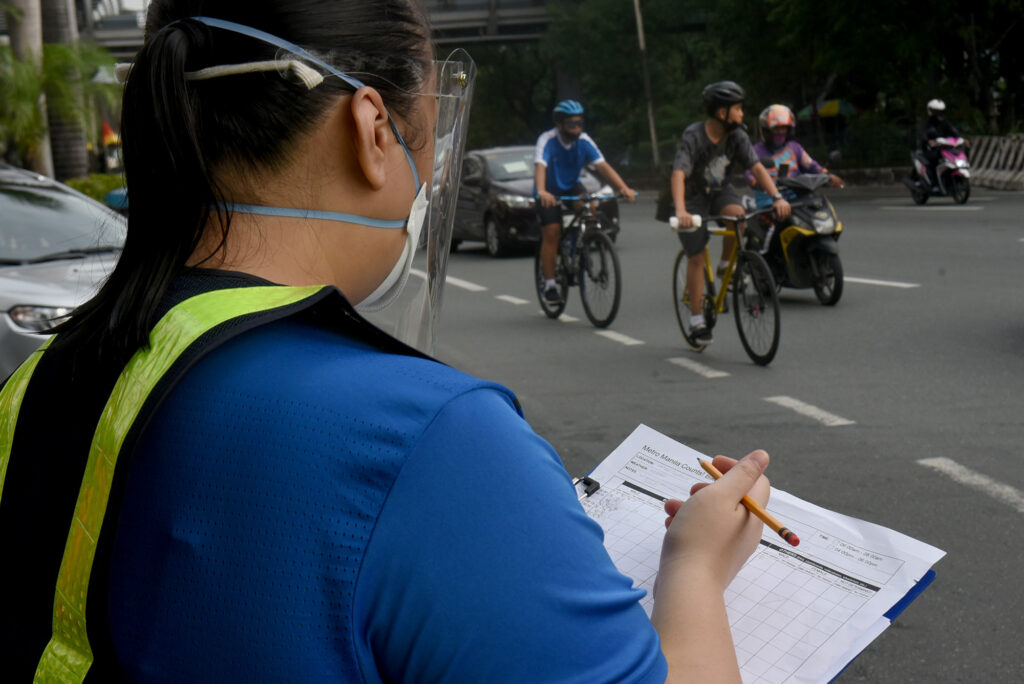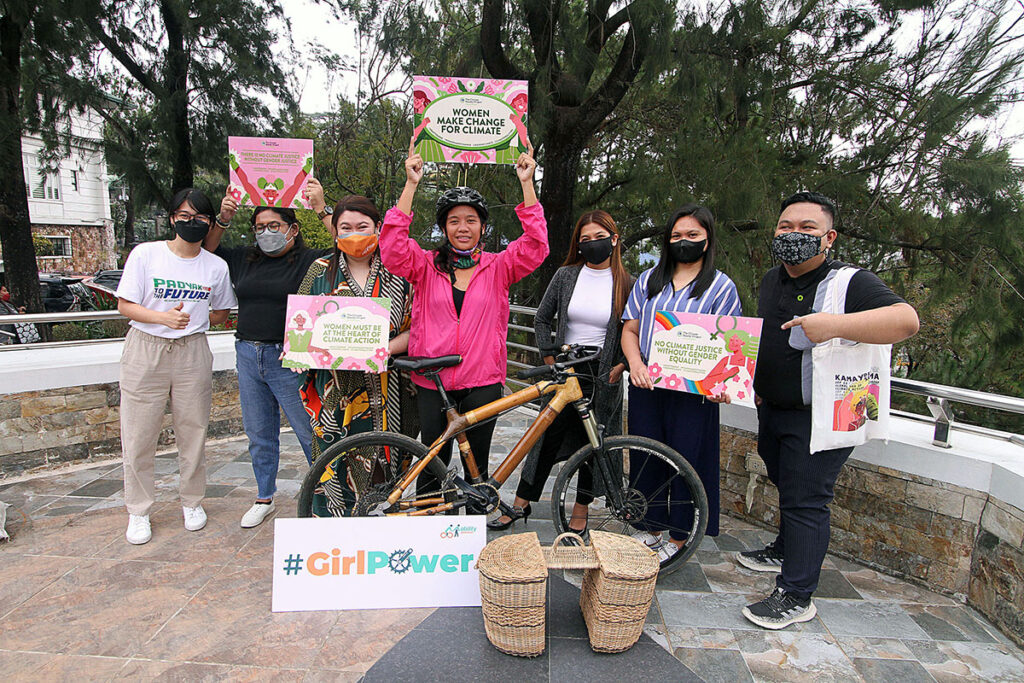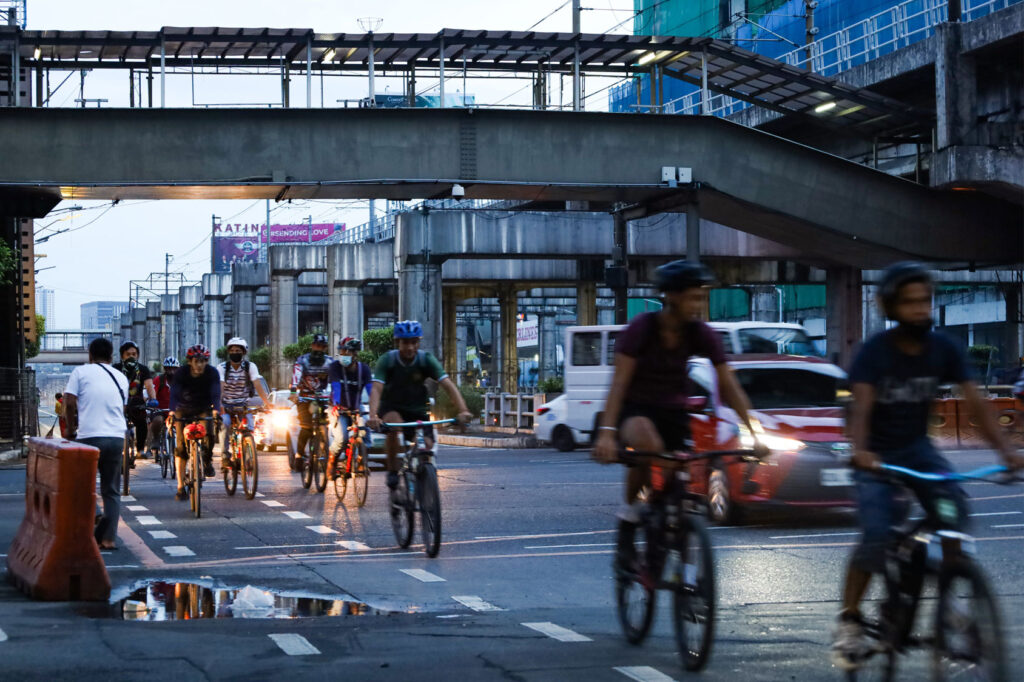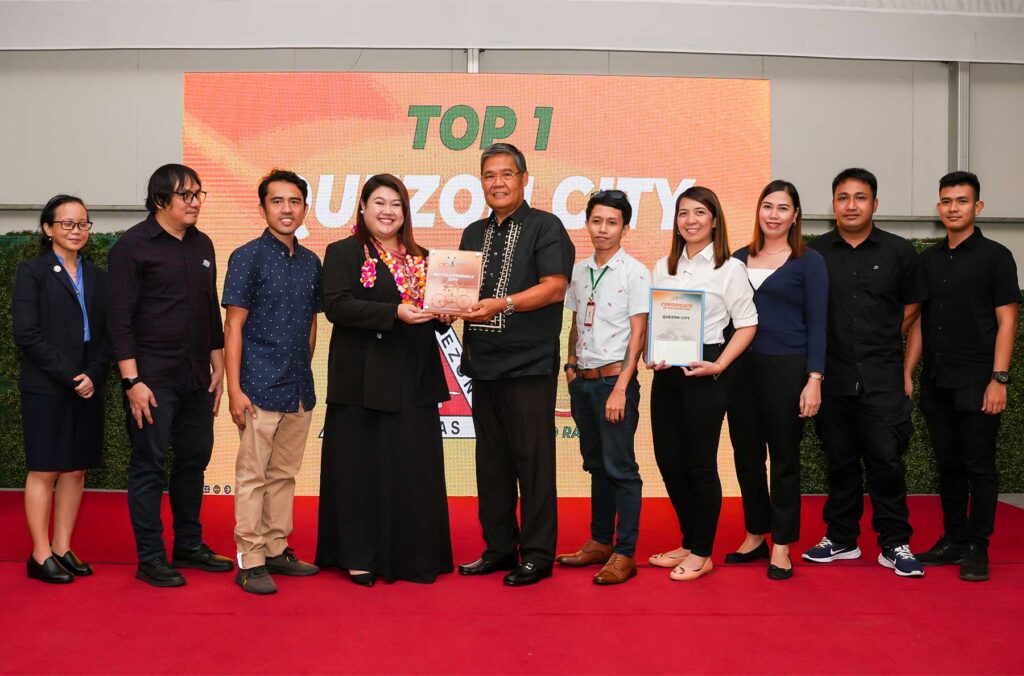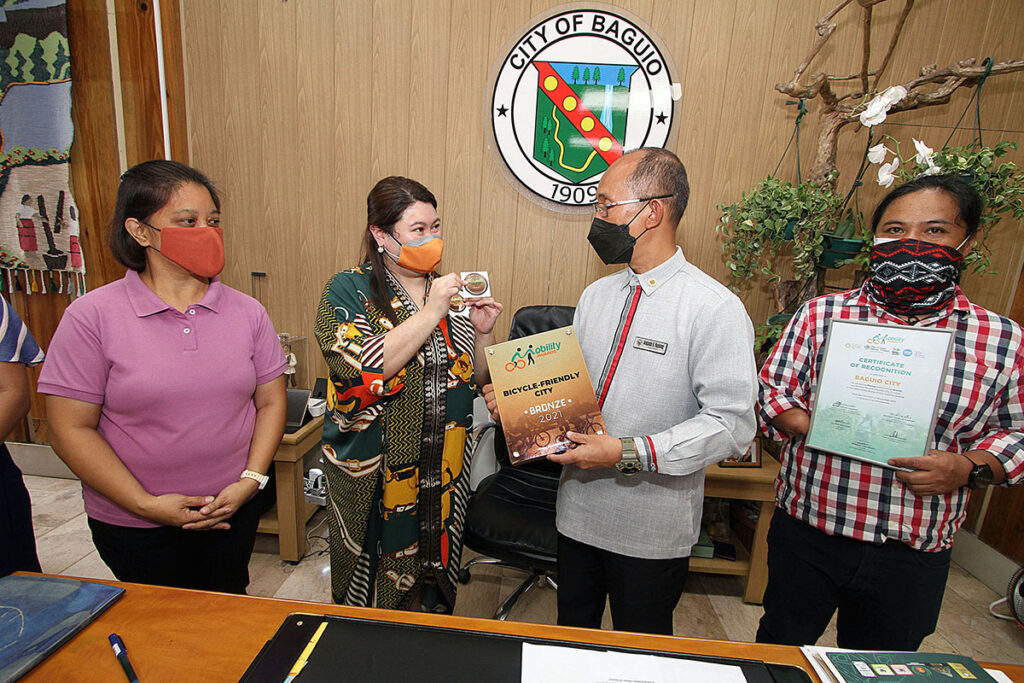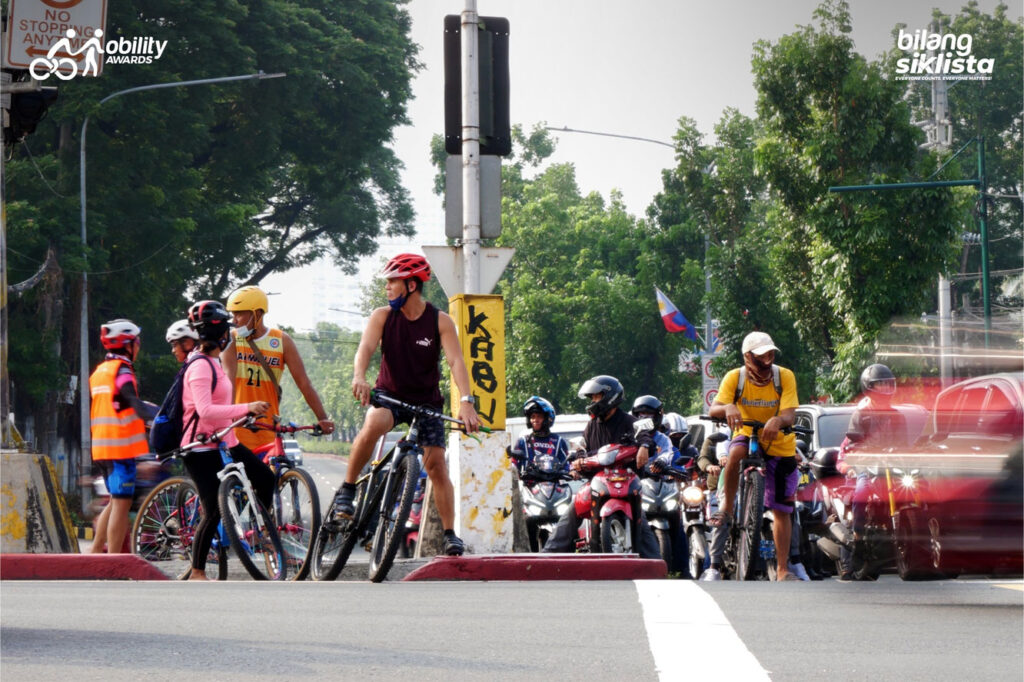Initial results show estimated number of cyclists on the road now at 500k
QUEZON CITY, 26 August 2021 — Citizen-led bike and pedestrian count project Metro Manila Counts (MMC) conservatively estimate that half a million cyclists are now on the roads of the capital. This was highlighted in this week’s episode of “Stories for a Better Normal: Pandemic and Climate Change Pathways,” organized by House Deputy Speaker and Antique Representative Loren Legarda and the Climate Change Commission (CCC).

“We need to count more and generate more evidence that can guide our policymakers,” said MNL Moves founder and the Institute for Climate and Sustainable Cities (ICSC) inclusive urban mobility advisor Aldrin Pelicano.
Conducted in June 8, a total of 168 volunteers participated in MMC and counted cyclists and pedestrians in key intersections in Pasig, San Juan, Marikina, and Quezon City during peak hours in the morning (6AM-8AM) and in the afternoon (4PM-6PM). MMC organizers and volunteers recorded 38,932 cyclists, 12,787 pedestrians, and 1,658 non-motorized users in total. Among the cyclists, approximately 54 percent were recorded in the morning rush hours. In terms of location, the largest number was recorded in Quezon City (16,709), followed by Pasig (11,159), Marikina (6,778), and San Juan (4,286) respectively.
“When you have numbers like this, we should already be implementing wider bike lanes,” said Pasig City Transport Office head Robert Anthony Siy III, speaking alongside Quezon City Mayor Joy Belmonte and San Juan City Information Officer Brian Geli. “It’s about time that we start thinking about the needs of people who want to use modes other than cars. If you build bike lanes, sidewalks, and high quality public transportation, Filipinos will surely support these initiatives if you give them the right service and the right facilities,” he added.
Supporting this is Mayor Belmonte, who cited mobility issues in Metro Manila before and during the COVID-19 pandemic, including car centrism and an inadequate and unresponsive transport system. “We really need to change it. I call on the national government to please include cyclists and pedestrians in redesigning our streets,” she added.
Pelicano also presented the potential implications of the findings in terms of road space and money savings. Results show that roughly 6,257 people in cars would occupy the same space as the number of recorded cyclists, transporting only 16 percent of individuals compared to bicycles. A huge gender disparity among cyclists was also observed in the study, with women cyclists accounting for only 3.1 percent of the total.
Moving to the corresponding monetary values, 38,932 cyclists would equate to Php 87,597 per kilometer worth of savings compared to standard jeepney fares, and Php 89,225.06 per kilometer worth of savings in terms of gasoline fuel cost for private vehicles. These respective amounts are equivalent to more than 2,000 kilograms of rice, enough to feed more than 200 Filipinos for a month. In terms of carbon emissions, the same number of cyclists compared to motorized vehicles would translate to 4.2 metric tons of carbon dioxide avoided.
“These insightful comparisons show how efficient cycling is as a mode of transportation, which emphasizes the need for national and local governments to make counting a permanent part of planning. Active transport must complement the country’s public transportation system,” Pelicano added.
Department of the Interior and Local Government (DILG), Department of Transportation (DOTr), and the Metro Manila Development Authority (MMDA) also joined the discussion, expressing their full support in the establishment of bike- and pedestrian-friendly projects.
“An inclusive transport system must be a product of collective efforts from many government instrumentalities and the DILG is ready to play its part. The gains that we have made so far indicate that we are on track,” said Assistant Secretary Odilon Pasaraba, announcing that 457 out of 1,059 or 43 percent of Philippine LGUs already have specific units in line for the implementation of active transport initiatives.
MMDA head executive assistant Michael Salalima reported that the Metro Manila Bike Lane Network, inaugurated by the DOTr and DPWH last July, spanning more than 300 kilometers, would benefit approximately 1,280 cyclists per hour per meter.
“A bike revolution is underway. We believe that given the proactive approach of LGUs, national government agencies, and the civil society, more Filipinos will be encouraged and motivated to take up cycling,” he added.
NOTES TO THE EDITOR
[1] “Stories for a Better Normal: Pandemic and Climate Change Pathways” is organized with support from the Mobility Awards (ICSC, MNL Moves, The Climate Reality Project Philippines, 350 Pilipinas, and the Pinay Bike Commuter Community), Department of Education, Philippine Information Agency, and Mother Earth Foundation. Today’s episode is part of an extensive theme in the series featuring sustainable urban mobility. facebook.com/iamlorenlegarda
[2] “Metro Manila Counts” is a collaboration between the Mobility Awards convenors and the local governments of Pasig, San Juan, Marikina, and Quezon City which aims to establish baseline data that would help justify the need for a better bike infrastructure in Metro Manila. bit.ly/metromanilacounts
CONTACT
Ira Guerrero: media@icsc.ngo, +63 917 149 5649, +63 968 539 9514


